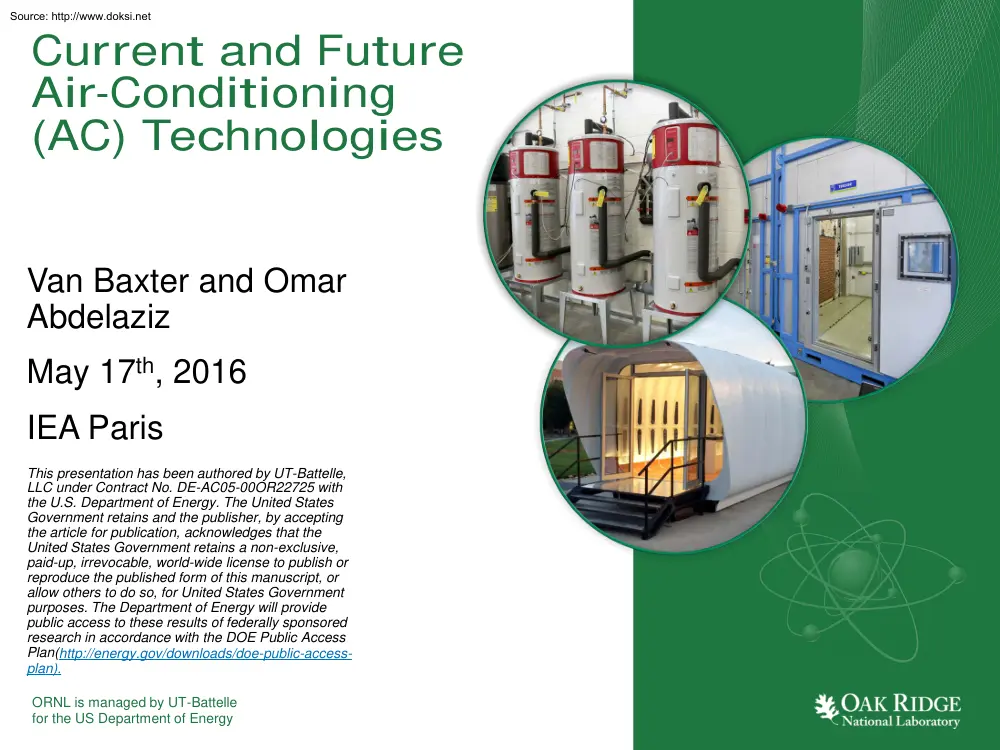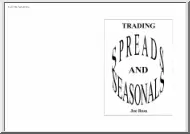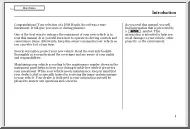Please log in to read this in our online viewer!

Please log in to read this in our online viewer!
No comments yet. You can be the first!
Content extract
Source: http://www.doksinet Current and Future Air-Conditioning (AC) Technologies Van Baxter and Omar Abdelaziz May 17th, 2016 IEA Paris This presentation has been authored by UT-Battelle, LLC under Contract No. DE-AC05-00OR22725 with the U.S Department of Energy The United States Government retains and the publisher, by accepting the article for publication, acknowledges that the United States Government retains a non-exclusive, paid-up, irrevocable, world-wide license to publish or reproduce the published form of this manuscript, or allow others to do so, for United States Government purposes. The Department of Energy will provide public access to these results of federally sponsored research in accordance with the DOE Public Access Plan(http://energy.gov/downloads/doe-public-accessplan) ORNL is managed by UT-Battelle for the US Department of Energy Source: http://www.doksinet Content • Current Technologies – Vapor Compression (Electric/Engine-Driven) • Ground source, air
source, water source – Heat Activated – Water-source integrated heat pump (IHP) • Future Technologies – Vapor Compression using alternative lower GWP refrigerants – Separate Sensible and Latent Cooling Systems – Personal Cooling Systems – Non-Vapor Compression Technologies • U.S R&D Roadmap for HVAC Technologies 2 Current and Future Cooling Technologies Source: http://www.doksinet Current – Electric Vapor Compression (VC) • Air cooled/air source – residential buildings – Mini-split ACs: – Rated Seasonal Performance Factors (SPF): 4.10ǂ to ~7.3 for 26-53 kW – Available up to 14 kW – Central ACs: – Rated SPF range: 4.10ǂ to ~76 for 53-88 kW; – Available up to ~18 kW • Commercial buildings – rooftop ACs – Rated integrated cooling SPF range; • 2.8 to 62 (available models in 20 - 55 kW capacity range, R410A) • 6.7 to 70 (in development; lower-GWP refrigerant) 3 Current and Future Cooling Technologies ǂ US min Source:
http://www.doksinet Current – Engine Driven (VC) • Commercial – Packaged • ~40 kW; COPgas 1.1 (@ 35C) • 12 kW water heating (heat recovery) • http://iceghp.com/gas heat pump/11-ton-gas-heat-pump/ – Multizone • 30-70 kW; COPgas ~1.0 (@ 35C) • Up to 33 indoor air handlers • Residential • Variable speed (VS); cooling or cooling + water heating (WH) • Cooling only – 10 kW; COPgas ~1.3 (@ 35C) – 10 kW; COPgas ~0.7 (@ 52C) • Cooling + WH – 10 kW + 4.5 kW; COPgas ~17 (@ 35C) – 10 kW; + 9 kW; COPgas ~1.2 (@ 52C) 4 Current and Future Cooling Technologies Source: http://www.doksinet Current – Heat Activated Technologies • US manufactured systems – ThermoSorber™ (Energy Concepts) • 52-1055 kW cooling or refrigeration • 137-1406 kW water heating • Industrial applications • Waste heat source – HeliSorber™ (Energy Concepts) • 88 kW cooling • 176 kW water heating • Solar thermal source • 2 kW electricity input • Simultaneous WH
and AC applications 5 Current and Future Cooling Technologies Source: http://www.doksinet Current – Heat Activated Technologies EU manufactured systems 6 Current and Future Cooling Technologies Source: http://www.doksinet Current – Electric Vapor Compression (VC) • Water cooled/water source (geothermal) – Rated cooling COP range (ISO 13285-1): • 4.10 to 132 (for 35-14 kW capacity; ground loop) • 4.10 to 188 (for 35-14 kW capacity; groundwater) Water-to-air heat pump unit Ground loop • Most recent development – integrated heat pump (IHP) systems 7 Current and Future Cooling Technologies Source: http://www.doksinet Current – water (or ground) source IHP Water source heat pump (WSHP) unit with variable speed (VS) compressor, blower, and pumps; Integral hot water storage tank System controller Field Test system installation (ground loop) in commercial kitchen facility Four operating modes: AC, space heating, WH, AC+WH VS cooling capacity ranges – 2.5-9
or 50-18 kW Rated cooling COPs – 6.3 (max speed), 132 (min speed) Measured seasonal COPs; 7.8 for AC, 36 for WH 8 Current and Future Cooling Technologies Source: http://www.doksinet Alternative Lower GWP Refrigerants • Effort to further mitigate the environmental impact of refrigerants used in vapor compression systems: – First generation “CFC” – potent ozone depleting potential (ODP) and global warming potential (GWP) – Second generation “HCFC” – has measurable ODP (however significantly less than CFC) but potent GWP – Third generation “HFC” no ODP but potent GWP – Fourth generation “HFC/HFO” blends no to extremely low ODP moderate to low GWP Class Refrigerant CFC R-12 0,73 10 200 A1 HCFC R-22 0,034 1 760 A1 HFC R-410A 0 1 924 A1 HFC/HFO DR-55 0 676 A2L 9 Current and Future Cooling Technologies ODP GWP Safety class Source: http://www.doksinet Major Research Thrusts in Alternative Refrigerants • AHRI Alternative
Refrigerant Evaluation Program (AHRI AREP) – Engaged international HVAC&R manufacturers, Research Organizations, and Academia – Completed 2 phases of research campaigns and published results at: http://www.ahrinetorg/site/514/Resources/Research/AHRI-LowGWP-Alternative-Refrigerants-Evaluation-Program – Held 2 conferences/meetings to discuss results • Promoting Low-GWP Refrigerants for the Air-Conditioning Sectors in High-Ambient-Temperature Countries (PRAHA) • Egyptian Program for Promoting Low-GWP Refrigerants’ Alternative (EGYPRA) • ORNL High Ambient Temperature (HAT) Research campaign 10 Current and Future Cooling Technologies Source: http://www.doksinet ORNL HAT Evaluation Campaign: Performance Relative to R-410A at 35C outdoor temperature Conditions 110% COP 105% DR-55 100% 90% ARM-71A HPR-2A 95% R-32 R-447A 80% 11 Current and Future Cooling Technologies 90% 100% Cooling Capacity 110% Source: http://www.doksinet AirH2O Separate Sensible and
Latent Cooling Systems 0.6 Ia OA Dew point Dehumidification 0.020 0.4 Ib 0.010 • Suitable for humid environments or locations with high latent loads 0.2 1c SA 40 60 • Moisture removal: 80 100 AirH2O 0.6 OA – Desiccant dehumidification releases heat during the moisture adsorption (sensible heating) and requires regeneration energy (thermal) – Membrane dehumidification is an isothermal dehumidification – requires continuous vacuum for operation Desiccant Dehumidification 0.4 3a' SA 3c' 0.2 3b' 100 80 60 40 0.010 3b 0.000 T [°F] AirH2O 0.6 OA Membrane Dehumidification 0.020 0.4 4a 0.010 0.2 SA 4b 4a' 4c' 12 Current and Future Cooling Technologies 0.020 3a • Sensible Cooling: operate a vapor compression system at higher evaporating temperature • Energy savings: no reheat, higher Tevap 0.000 T [°F] 4b' 40 60 80 100 0.000 T [°F] Source: http://www.doksinet NanoAir™: An Opportunity System
Architecture Unique and efficient Patented system (US #9,283,518) Exhaust Fan 3 16 Sensible Condenser 3-way Valve 9 18 4 ERV Humidifier 17 15 1 Sensible Cooling Latent Cooling No fluorocarbon refrigerants Independent humidity & temperature control Up to 50% energy savings compared to minimum efficiency standard ERV Fan 19 Vapor Compressor ERV Fan 8 12 Roughing Pump 13 Makeup Valve 2 5 11 6 Electrochemical Vapor Compressor Membrane Chiller 7 Supply Fan Dehumidifier 14 10 Drain Valve 1 Outside Air 11 Compressed Water Vapor 2 ERV Supply Air 12 Condensate 3 Return Air 13 Makeup Water 4 ERV Exhaust Air 14 Drain 5 Mixed Return Air 15 Mixed Outside Air 6 Dehumidified Air 16 Heated Outside Air 7 Conditioned Supply Air 17 Humid Exhaust Air 8 Water Vapor 18 Non-Condensable Gases 9 Compressed Water Vapor 19 Ambient Air 10 Water Vapor 13 Current and Future Cooling Technologies Copyright 2016 Dais Analytic. This slide may
contain projections & assumptions and refers to patented or patent pending information Source: http://www.doksinet Separate Sensible and Latent Cooling – Electrochemical Compression, Xergy • Sensible cooling using electrochemical compressor with integrated metal hydrides • Latent cooling using desiccant dehumidification – Condenser heat used to regenerate ionic liquid – Ionic Liquid designed to have maximum absorption/desorption with lowest required regeneration temperature Scavenging Air Process Air Demister Demister Heater Cooler Internal Heat Exchang er Weak Desiccant 14 Current and Future Cooling Technologies Regenerator Conditioner Strong Desiccant Source: http://www.doksinet Personal Cooling Systems • Objective: develop localized cooling systems – Enable relaxation of general indoor temperature settings: reduce building load and HVAC energy use – Improve occupant comfort • Low cost phase change component – Compressed graphite and paraffin
• System design developed and prototypes assembled – Working toward minimizing system cost 15 Current and Future Cooling Technologies Source: http://www.doksinet Alternative HVAC Technologies • Navigant performed assessment of alternative technologies for DOE in 2014* • Objectives: – Identify most promising future technology options for RD&D efforts – Ranked options based on energy savings potential, development status, other criteria Magnetic cooling system Membrane cooling system Thermoelastic cooling system * http://energy.gov/sites/prod/files/2014/03/f12/Non-Vapor%20Compression%20HVAC%20Reportpdf “Energy Savings Potential and RD&D Opportunities for Non-Vapor-Compression HVAC Technologies,” Goetzler, W., R Zogg, J Young, and C Johnson (Navigant Consulting), March 2014 16 Current and Future Cooling Technologies Source: http://www.doksinet Alternative HVAC Technologies – Energy Savings potential 1 Quad = 1.055 EJ *
http://energy.gov/sites/prod/files/2014/03/f12/Non-Vapor%20Compression%20HVAC%20Reportpdf 17 Current and Future Cooling Technologies Source: http://www.doksinet Alternative HVAC Technologies – Priority Rankings * http://energy.gov/sites/prod/files/2014/03/f12/Non-Vapor%20Compression%20HVAC%20Reportpdf 18 Current and Future Cooling Technologies Alternative HVAC Technologies – Development Status Source: http://www.doksinet Source: “The Future of Low-GWP Air Conditioning for Buildings.” Goetzler, W, M Guernsey, J Young, and J Fuhrman (Navigant Consulting); and O. A Abdelaziz (ORNL) June 2016 19 Current and Future Cooling Technologies Source: http://www.doksinet U.S DOE Research & Development Roadmap for HVAC Technologies • Enable renewable microgrid integration by developing DC-powered HVAC system (no inverter losses) • Enable climate specific HVAC solutions: – Separate sensible and latent cooling systems – Cold climate heat pumps • Develop advanced
compression technologies (electrochemical compressors) • Seasonal energy storage systems http://energy.gov/sites/prod/files/2014/12/f19/Research%20and%20Development%20Roadmap%20for%20Emergi ng%20HVAC%20Technologies.pdf 20 Current and Future Cooling Technologies Source: http://www.doksinet U.S DOE Research & Development Roadmap for HVAC Technologies • Reduce the cost of sorption systems: new working fluid pairs, miniature heat exchangers, improved materials • Develop mixed-mode AC systems to maximize energy savings associated with natural ventilation • Improve ground-source heat pump (GHP) cost effectiveness • Develop alternative lower emission HVAC systems • Develop solid-state (caloric) cooling systems – CaloriCoolTM 21 Current and Future Cooling Technologies Source: http://www.doksinet Enabling Research and Development Initiatives • Proper system commissioning and installation • Transactive HVAC management (Smart Grid) • Low-cost sensors and controls;
open source automation systems • Standard methods for DAS • Demonstrate renewable-integrated district CCHP • Building metric (energy, health, etc.) • Energy recovery: buildings with simultaneous heating and cooling loads • Simplified energy analysis tools for homeowners • Lessons learned repository for high performance buildings database 22 Current and Future Cooling Technologies Source: http://www.doksinet Discussion Van D. Baxter, vdb@ornlgov Omar A. Abdelaziz, abdelazizoa@ornlgov Visit our website: www.ornlgov/buildings 23 Current and Future Cooling Technologies
source, water source – Heat Activated – Water-source integrated heat pump (IHP) • Future Technologies – Vapor Compression using alternative lower GWP refrigerants – Separate Sensible and Latent Cooling Systems – Personal Cooling Systems – Non-Vapor Compression Technologies • U.S R&D Roadmap for HVAC Technologies 2 Current and Future Cooling Technologies Source: http://www.doksinet Current – Electric Vapor Compression (VC) • Air cooled/air source – residential buildings – Mini-split ACs: – Rated Seasonal Performance Factors (SPF): 4.10ǂ to ~7.3 for 26-53 kW – Available up to 14 kW – Central ACs: – Rated SPF range: 4.10ǂ to ~76 for 53-88 kW; – Available up to ~18 kW • Commercial buildings – rooftop ACs – Rated integrated cooling SPF range; • 2.8 to 62 (available models in 20 - 55 kW capacity range, R410A) • 6.7 to 70 (in development; lower-GWP refrigerant) 3 Current and Future Cooling Technologies ǂ US min Source:
http://www.doksinet Current – Engine Driven (VC) • Commercial – Packaged • ~40 kW; COPgas 1.1 (@ 35C) • 12 kW water heating (heat recovery) • http://iceghp.com/gas heat pump/11-ton-gas-heat-pump/ – Multizone • 30-70 kW; COPgas ~1.0 (@ 35C) • Up to 33 indoor air handlers • Residential • Variable speed (VS); cooling or cooling + water heating (WH) • Cooling only – 10 kW; COPgas ~1.3 (@ 35C) – 10 kW; COPgas ~0.7 (@ 52C) • Cooling + WH – 10 kW + 4.5 kW; COPgas ~17 (@ 35C) – 10 kW; + 9 kW; COPgas ~1.2 (@ 52C) 4 Current and Future Cooling Technologies Source: http://www.doksinet Current – Heat Activated Technologies • US manufactured systems – ThermoSorber™ (Energy Concepts) • 52-1055 kW cooling or refrigeration • 137-1406 kW water heating • Industrial applications • Waste heat source – HeliSorber™ (Energy Concepts) • 88 kW cooling • 176 kW water heating • Solar thermal source • 2 kW electricity input • Simultaneous WH
and AC applications 5 Current and Future Cooling Technologies Source: http://www.doksinet Current – Heat Activated Technologies EU manufactured systems 6 Current and Future Cooling Technologies Source: http://www.doksinet Current – Electric Vapor Compression (VC) • Water cooled/water source (geothermal) – Rated cooling COP range (ISO 13285-1): • 4.10 to 132 (for 35-14 kW capacity; ground loop) • 4.10 to 188 (for 35-14 kW capacity; groundwater) Water-to-air heat pump unit Ground loop • Most recent development – integrated heat pump (IHP) systems 7 Current and Future Cooling Technologies Source: http://www.doksinet Current – water (or ground) source IHP Water source heat pump (WSHP) unit with variable speed (VS) compressor, blower, and pumps; Integral hot water storage tank System controller Field Test system installation (ground loop) in commercial kitchen facility Four operating modes: AC, space heating, WH, AC+WH VS cooling capacity ranges – 2.5-9
or 50-18 kW Rated cooling COPs – 6.3 (max speed), 132 (min speed) Measured seasonal COPs; 7.8 for AC, 36 for WH 8 Current and Future Cooling Technologies Source: http://www.doksinet Alternative Lower GWP Refrigerants • Effort to further mitigate the environmental impact of refrigerants used in vapor compression systems: – First generation “CFC” – potent ozone depleting potential (ODP) and global warming potential (GWP) – Second generation “HCFC” – has measurable ODP (however significantly less than CFC) but potent GWP – Third generation “HFC” no ODP but potent GWP – Fourth generation “HFC/HFO” blends no to extremely low ODP moderate to low GWP Class Refrigerant CFC R-12 0,73 10 200 A1 HCFC R-22 0,034 1 760 A1 HFC R-410A 0 1 924 A1 HFC/HFO DR-55 0 676 A2L 9 Current and Future Cooling Technologies ODP GWP Safety class Source: http://www.doksinet Major Research Thrusts in Alternative Refrigerants • AHRI Alternative
Refrigerant Evaluation Program (AHRI AREP) – Engaged international HVAC&R manufacturers, Research Organizations, and Academia – Completed 2 phases of research campaigns and published results at: http://www.ahrinetorg/site/514/Resources/Research/AHRI-LowGWP-Alternative-Refrigerants-Evaluation-Program – Held 2 conferences/meetings to discuss results • Promoting Low-GWP Refrigerants for the Air-Conditioning Sectors in High-Ambient-Temperature Countries (PRAHA) • Egyptian Program for Promoting Low-GWP Refrigerants’ Alternative (EGYPRA) • ORNL High Ambient Temperature (HAT) Research campaign 10 Current and Future Cooling Technologies Source: http://www.doksinet ORNL HAT Evaluation Campaign: Performance Relative to R-410A at 35C outdoor temperature Conditions 110% COP 105% DR-55 100% 90% ARM-71A HPR-2A 95% R-32 R-447A 80% 11 Current and Future Cooling Technologies 90% 100% Cooling Capacity 110% Source: http://www.doksinet AirH2O Separate Sensible and
Latent Cooling Systems 0.6 Ia OA Dew point Dehumidification 0.020 0.4 Ib 0.010 • Suitable for humid environments or locations with high latent loads 0.2 1c SA 40 60 • Moisture removal: 80 100 AirH2O 0.6 OA – Desiccant dehumidification releases heat during the moisture adsorption (sensible heating) and requires regeneration energy (thermal) – Membrane dehumidification is an isothermal dehumidification – requires continuous vacuum for operation Desiccant Dehumidification 0.4 3a' SA 3c' 0.2 3b' 100 80 60 40 0.010 3b 0.000 T [°F] AirH2O 0.6 OA Membrane Dehumidification 0.020 0.4 4a 0.010 0.2 SA 4b 4a' 4c' 12 Current and Future Cooling Technologies 0.020 3a • Sensible Cooling: operate a vapor compression system at higher evaporating temperature • Energy savings: no reheat, higher Tevap 0.000 T [°F] 4b' 40 60 80 100 0.000 T [°F] Source: http://www.doksinet NanoAir™: An Opportunity System
Architecture Unique and efficient Patented system (US #9,283,518) Exhaust Fan 3 16 Sensible Condenser 3-way Valve 9 18 4 ERV Humidifier 17 15 1 Sensible Cooling Latent Cooling No fluorocarbon refrigerants Independent humidity & temperature control Up to 50% energy savings compared to minimum efficiency standard ERV Fan 19 Vapor Compressor ERV Fan 8 12 Roughing Pump 13 Makeup Valve 2 5 11 6 Electrochemical Vapor Compressor Membrane Chiller 7 Supply Fan Dehumidifier 14 10 Drain Valve 1 Outside Air 11 Compressed Water Vapor 2 ERV Supply Air 12 Condensate 3 Return Air 13 Makeup Water 4 ERV Exhaust Air 14 Drain 5 Mixed Return Air 15 Mixed Outside Air 6 Dehumidified Air 16 Heated Outside Air 7 Conditioned Supply Air 17 Humid Exhaust Air 8 Water Vapor 18 Non-Condensable Gases 9 Compressed Water Vapor 19 Ambient Air 10 Water Vapor 13 Current and Future Cooling Technologies Copyright 2016 Dais Analytic. This slide may
contain projections & assumptions and refers to patented or patent pending information Source: http://www.doksinet Separate Sensible and Latent Cooling – Electrochemical Compression, Xergy • Sensible cooling using electrochemical compressor with integrated metal hydrides • Latent cooling using desiccant dehumidification – Condenser heat used to regenerate ionic liquid – Ionic Liquid designed to have maximum absorption/desorption with lowest required regeneration temperature Scavenging Air Process Air Demister Demister Heater Cooler Internal Heat Exchang er Weak Desiccant 14 Current and Future Cooling Technologies Regenerator Conditioner Strong Desiccant Source: http://www.doksinet Personal Cooling Systems • Objective: develop localized cooling systems – Enable relaxation of general indoor temperature settings: reduce building load and HVAC energy use – Improve occupant comfort • Low cost phase change component – Compressed graphite and paraffin
• System design developed and prototypes assembled – Working toward minimizing system cost 15 Current and Future Cooling Technologies Source: http://www.doksinet Alternative HVAC Technologies • Navigant performed assessment of alternative technologies for DOE in 2014* • Objectives: – Identify most promising future technology options for RD&D efforts – Ranked options based on energy savings potential, development status, other criteria Magnetic cooling system Membrane cooling system Thermoelastic cooling system * http://energy.gov/sites/prod/files/2014/03/f12/Non-Vapor%20Compression%20HVAC%20Reportpdf “Energy Savings Potential and RD&D Opportunities for Non-Vapor-Compression HVAC Technologies,” Goetzler, W., R Zogg, J Young, and C Johnson (Navigant Consulting), March 2014 16 Current and Future Cooling Technologies Source: http://www.doksinet Alternative HVAC Technologies – Energy Savings potential 1 Quad = 1.055 EJ *
http://energy.gov/sites/prod/files/2014/03/f12/Non-Vapor%20Compression%20HVAC%20Reportpdf 17 Current and Future Cooling Technologies Source: http://www.doksinet Alternative HVAC Technologies – Priority Rankings * http://energy.gov/sites/prod/files/2014/03/f12/Non-Vapor%20Compression%20HVAC%20Reportpdf 18 Current and Future Cooling Technologies Alternative HVAC Technologies – Development Status Source: http://www.doksinet Source: “The Future of Low-GWP Air Conditioning for Buildings.” Goetzler, W, M Guernsey, J Young, and J Fuhrman (Navigant Consulting); and O. A Abdelaziz (ORNL) June 2016 19 Current and Future Cooling Technologies Source: http://www.doksinet U.S DOE Research & Development Roadmap for HVAC Technologies • Enable renewable microgrid integration by developing DC-powered HVAC system (no inverter losses) • Enable climate specific HVAC solutions: – Separate sensible and latent cooling systems – Cold climate heat pumps • Develop advanced
compression technologies (electrochemical compressors) • Seasonal energy storage systems http://energy.gov/sites/prod/files/2014/12/f19/Research%20and%20Development%20Roadmap%20for%20Emergi ng%20HVAC%20Technologies.pdf 20 Current and Future Cooling Technologies Source: http://www.doksinet U.S DOE Research & Development Roadmap for HVAC Technologies • Reduce the cost of sorption systems: new working fluid pairs, miniature heat exchangers, improved materials • Develop mixed-mode AC systems to maximize energy savings associated with natural ventilation • Improve ground-source heat pump (GHP) cost effectiveness • Develop alternative lower emission HVAC systems • Develop solid-state (caloric) cooling systems – CaloriCoolTM 21 Current and Future Cooling Technologies Source: http://www.doksinet Enabling Research and Development Initiatives • Proper system commissioning and installation • Transactive HVAC management (Smart Grid) • Low-cost sensors and controls;
open source automation systems • Standard methods for DAS • Demonstrate renewable-integrated district CCHP • Building metric (energy, health, etc.) • Energy recovery: buildings with simultaneous heating and cooling loads • Simplified energy analysis tools for homeowners • Lessons learned repository for high performance buildings database 22 Current and Future Cooling Technologies Source: http://www.doksinet Discussion Van D. Baxter, vdb@ornlgov Omar A. Abdelaziz, abdelazizoa@ornlgov Visit our website: www.ornlgov/buildings 23 Current and Future Cooling Technologies




 Just like you draw up a plan when you’re going to war, building a house, or even going on vacation, you need to draw up a plan for your business. This tutorial will help you to clearly see where you are and make it possible to understand where you’re going.
Just like you draw up a plan when you’re going to war, building a house, or even going on vacation, you need to draw up a plan for your business. This tutorial will help you to clearly see where you are and make it possible to understand where you’re going.